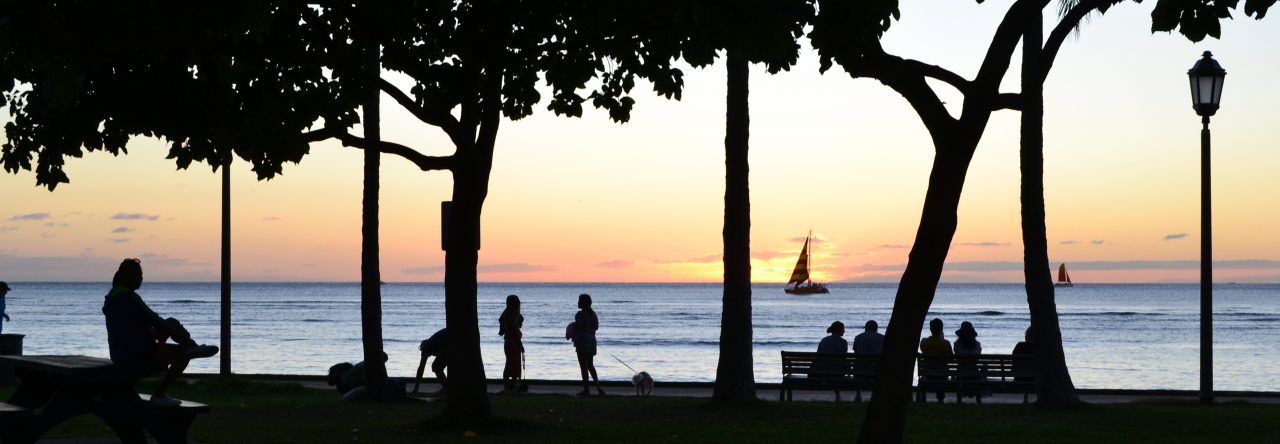The entrance to the port at Rhodes once featured the Colossus of Rhodes, a bronze sculpture taller than 100 feet on a pedestal of 50 feet that is considered one of the 7 wonders of the ancient world. It was built in the late 4th century BCE to celebrate the island’s victory over the Cypriots. The statue stood for only about 50 years when an earthquake (common in the Aegean) toppled it. The pieces were sold and melted so that today nothing remains. Nonetheless, the statue represents the importance of this island and its strategic location.
Rhodes is one of the most popular of the Greek islands, along with Santorini, Mykonos and Corfu because of its well-developed tourism services and attractions. Of all the Greek islands it arguably has the most significant and complete historic buildings. And the sites are from a variety of eras including the Archaic, Classic and Hellenistic eras BCE, the Byzantine era, the time of the Crusading Knights and the Ottoman era. Each has left its mark on the island and many have been preserved or reconstructed.
The city of Rhodes sits at the top of the spear-tip shaped island and is by far the largest urban area. It is a myriad of modern attractions including a ritzy casino, an aquarium, clubs, restaurants, tavernas and lots of shopping. The entire town is walkable. On the eastern side of the city is the port with rustic windmills contrasting with
the massive cruise ships that dock here. A short walk from the dock is the entrance to the Old Town which is surrounded by a defensive wall and contains some of the islands most popular attractions, along with many small tourist oriented shops and restaurants. Originally built by Knight Hospitaller (a different order, but similar to the Knights Templar) during the post-Crusades era when they needed a new home after being expelled from Palestine by the Arabs. From the beginning of the 14th to the beginning of the 16th centuries AD, the Knights ruled the island. After years of siege, the Ottomans took control.
In the early 20th century, the island was ruled by Italy and they reconstructed much of the old city. The largest building in the area was the Grand Master’s Palace which had been destroyed by a gunpowder explosion in 1856. The Italians built a new Palace (for Mussolini who never used it) in an imaginary medieval style. Even if it is a fantasy, the current palace is a beautiful building with interesting features and contents. Most are from various parts of Greece from late medieval era. To see more genuine items from the island, you should visit the Archaeological Museum (also in the Old Town) which features many impressive items from ancient and medieval times. There are also two small mosques, an impressive Byzantine Church and other ruins in the walled city. There is also great shopping for local crafts and products. I purchased a silk tie made in Rhodes. There are lots of leather goods and clothing as well.
During the centuries the walls and other protective features of the Old Town were repeatedly reinforced. The wall is amazingly thick and surrounded by a very wide moat with gardens (not water) in it.
Another popular attraction on the island is the Lindos Acropolis about 50 kilometers south of Rhodes. It was the center of a settlement which pre-dated the current capital because of its strategic setting. Unlike the Athens Acropolis, the preservation and reconstruction efforts in Lindos have attempted to bring back buildings from various eras from pre-classic times to the time of the Knights. Below the hilltop on the side of the slope there is the artsy town of Lindos with Byzantine style homes and churches and some nice shops and restaurants with scenic views of the bays and lagoons. You can walk up the hill, but it’s a lot of fun to take one of the local donkeys half-way there for a few Euros. Lindos is not an easy place to walk. To get to the top you must walk up a step open stairway and then walk on uneven ground, but the views from the top are among my favorite in the Med. From the top you can easily understand why the ancients selected this spot to build temples and churches.
There are a number of scenic Byzantine monasteries and churches located on hilltops on the island. We visited one in the center of the island near the small town of Laerma where we had one of the best meals or our trip. The owner of the restaurant enlisted a local bus driver to wait on us because he was the only person around who spoke English. It was a great Greek feast served family style. It was a little cool (November) but we sat out on the patio with a great view of the olive groves and goats wandering the grassy fields. Places like this help you get to know what it is like to live in the old world where the past is all around you and history is treasured.
